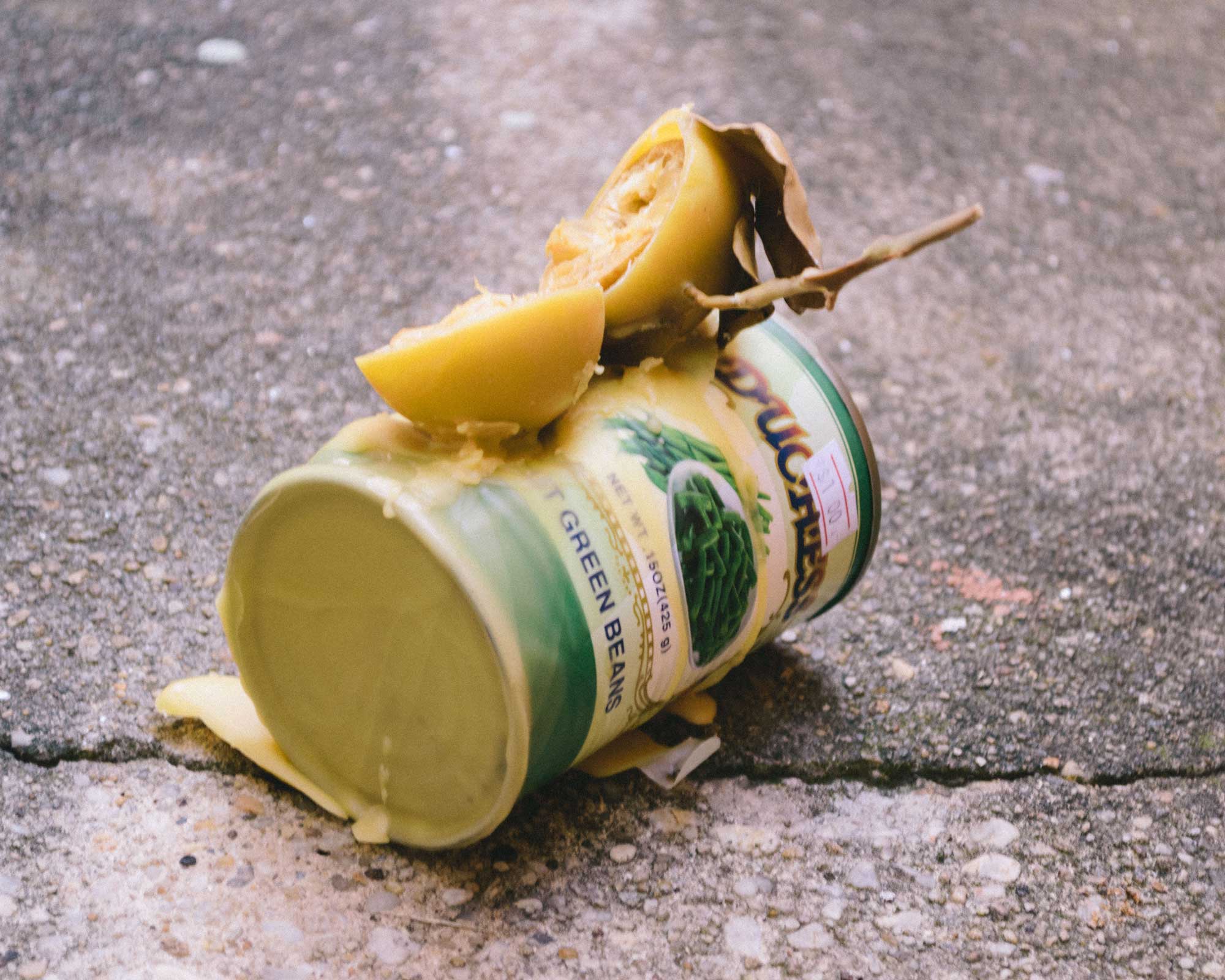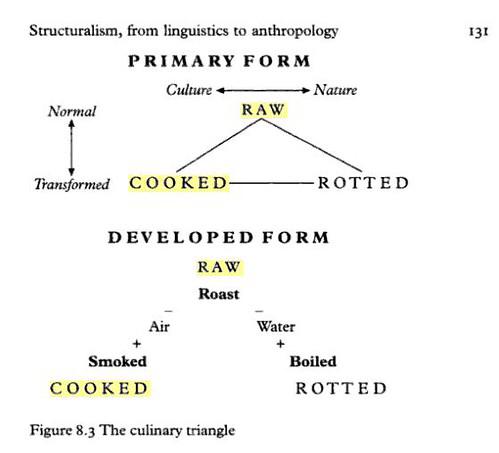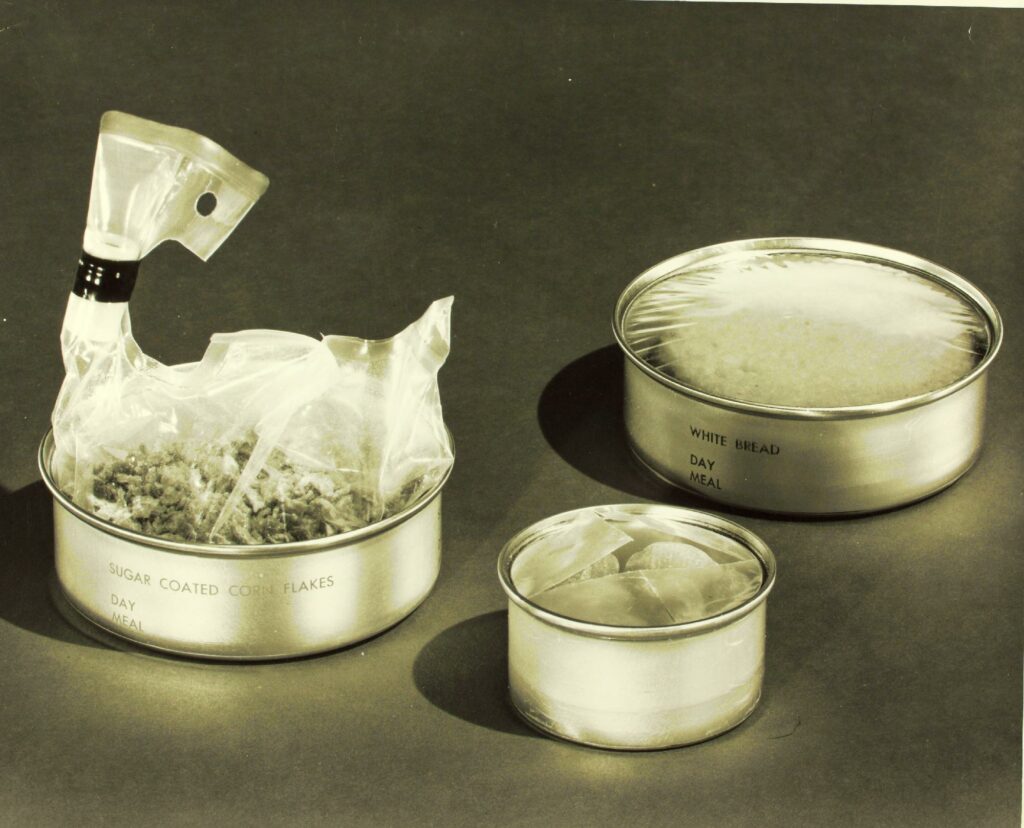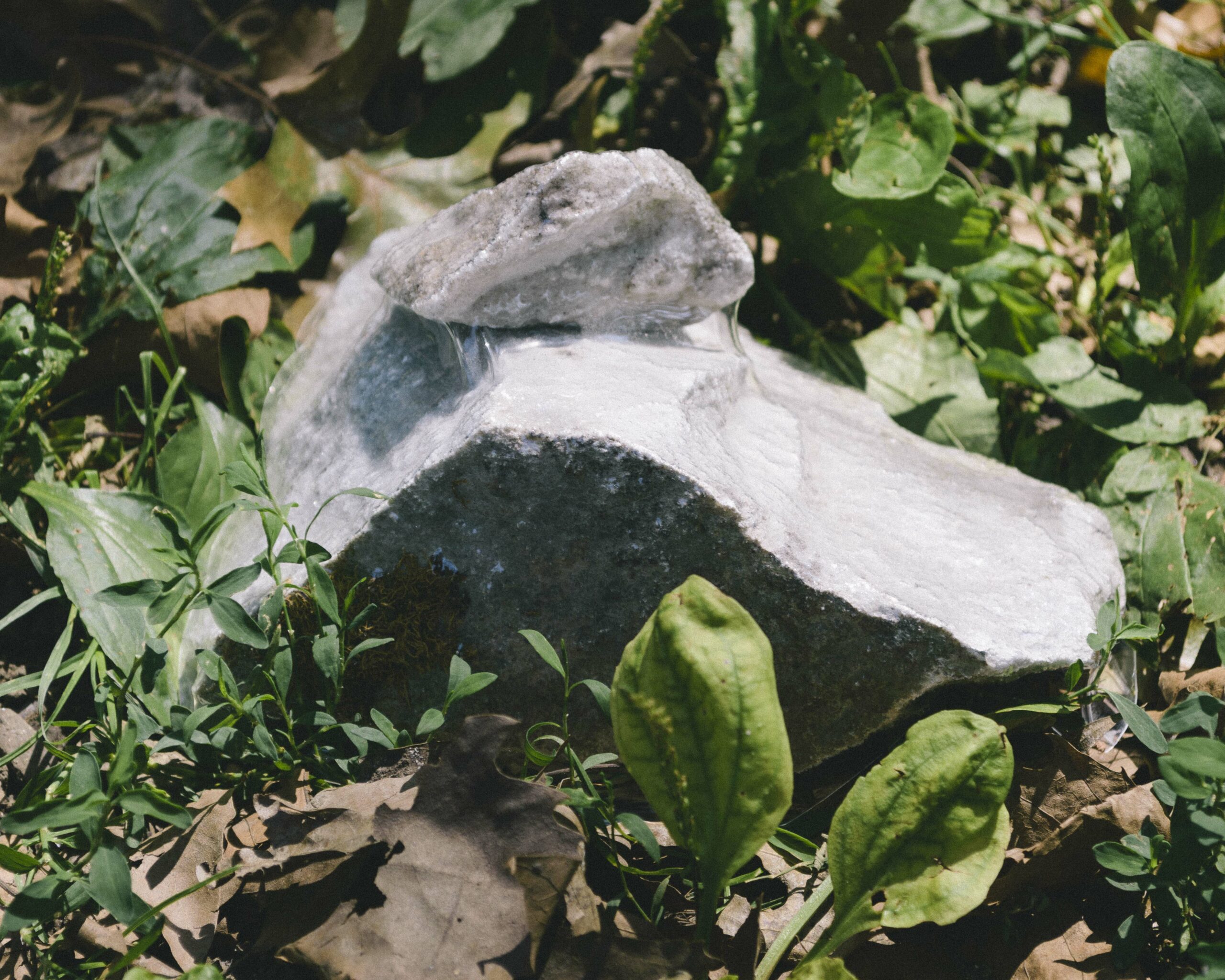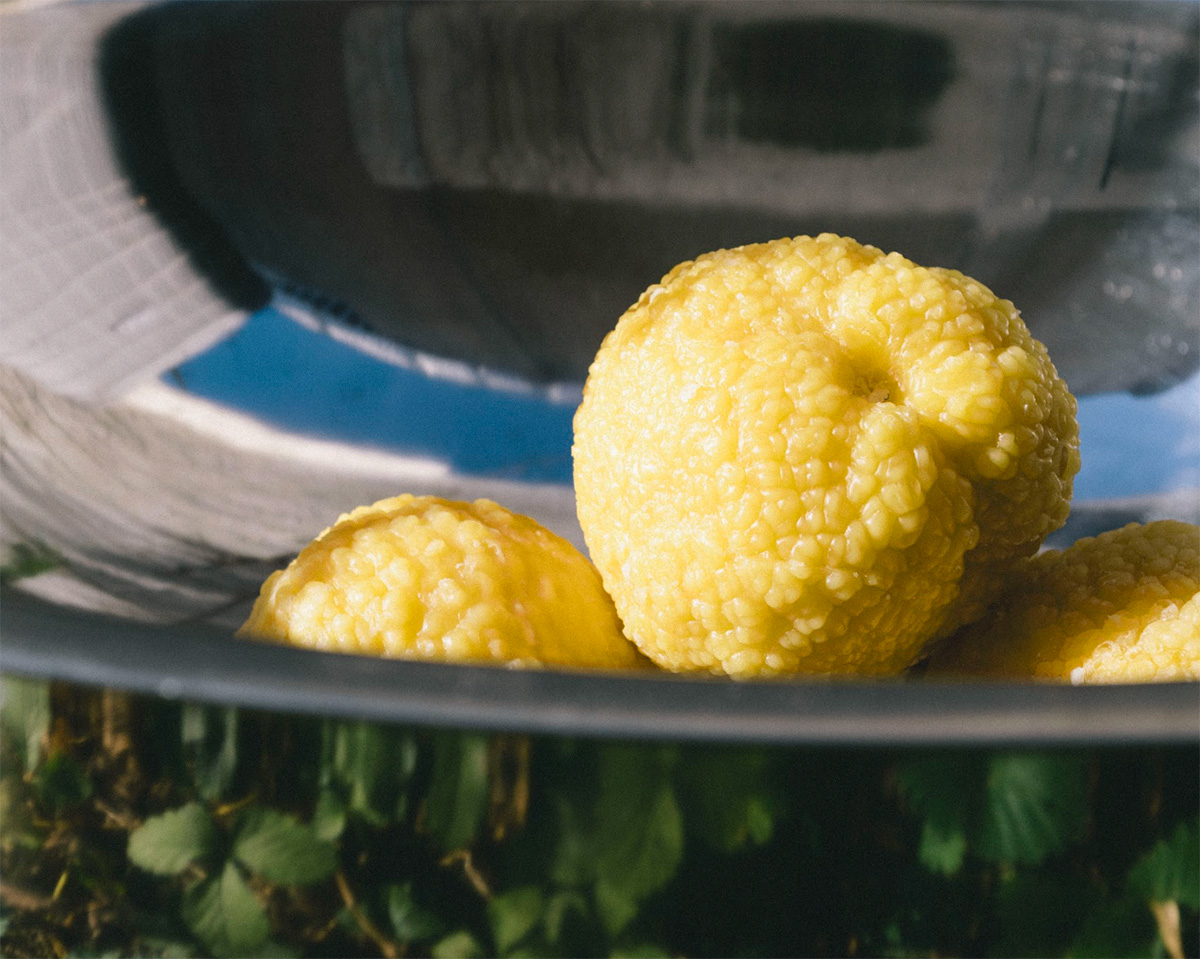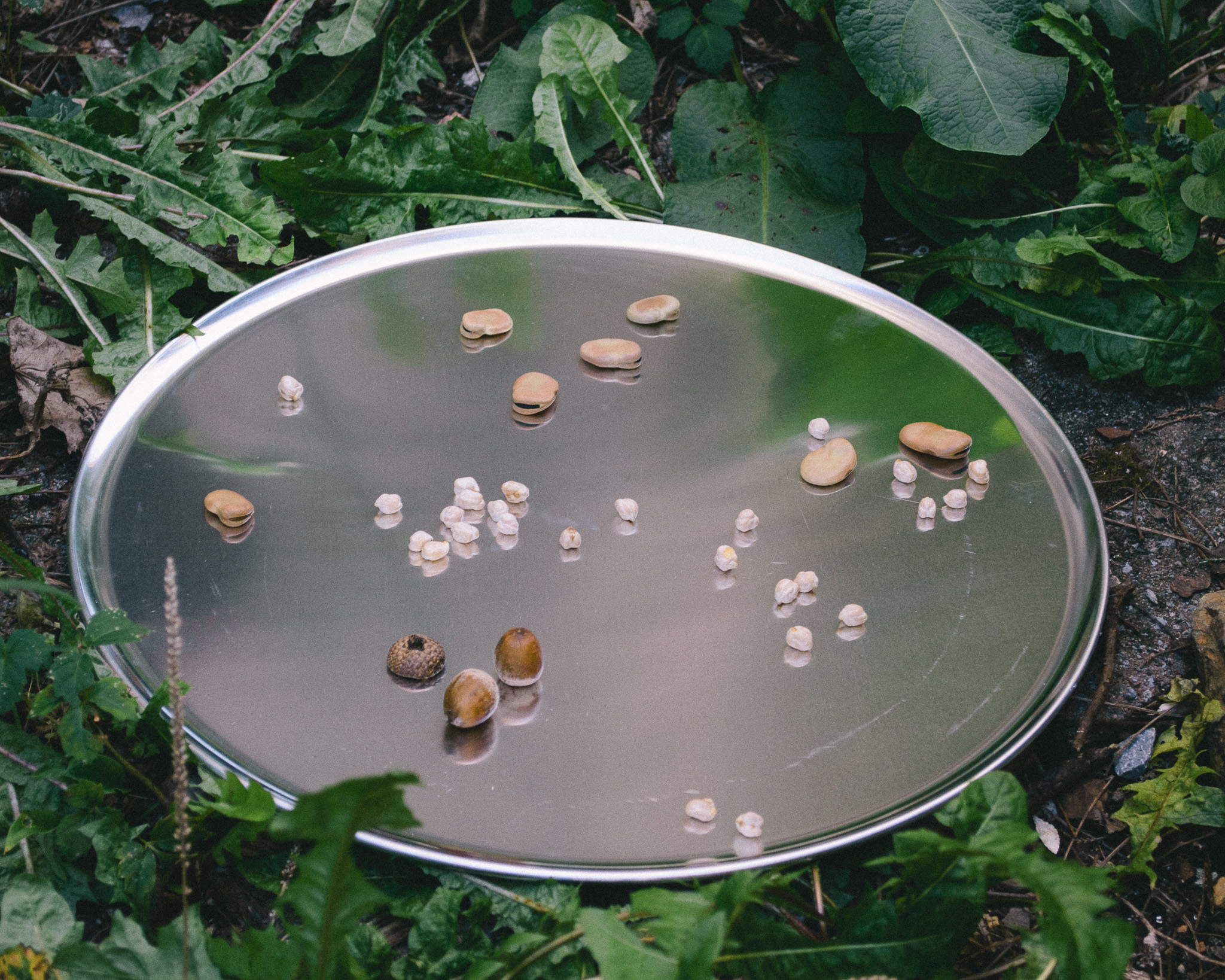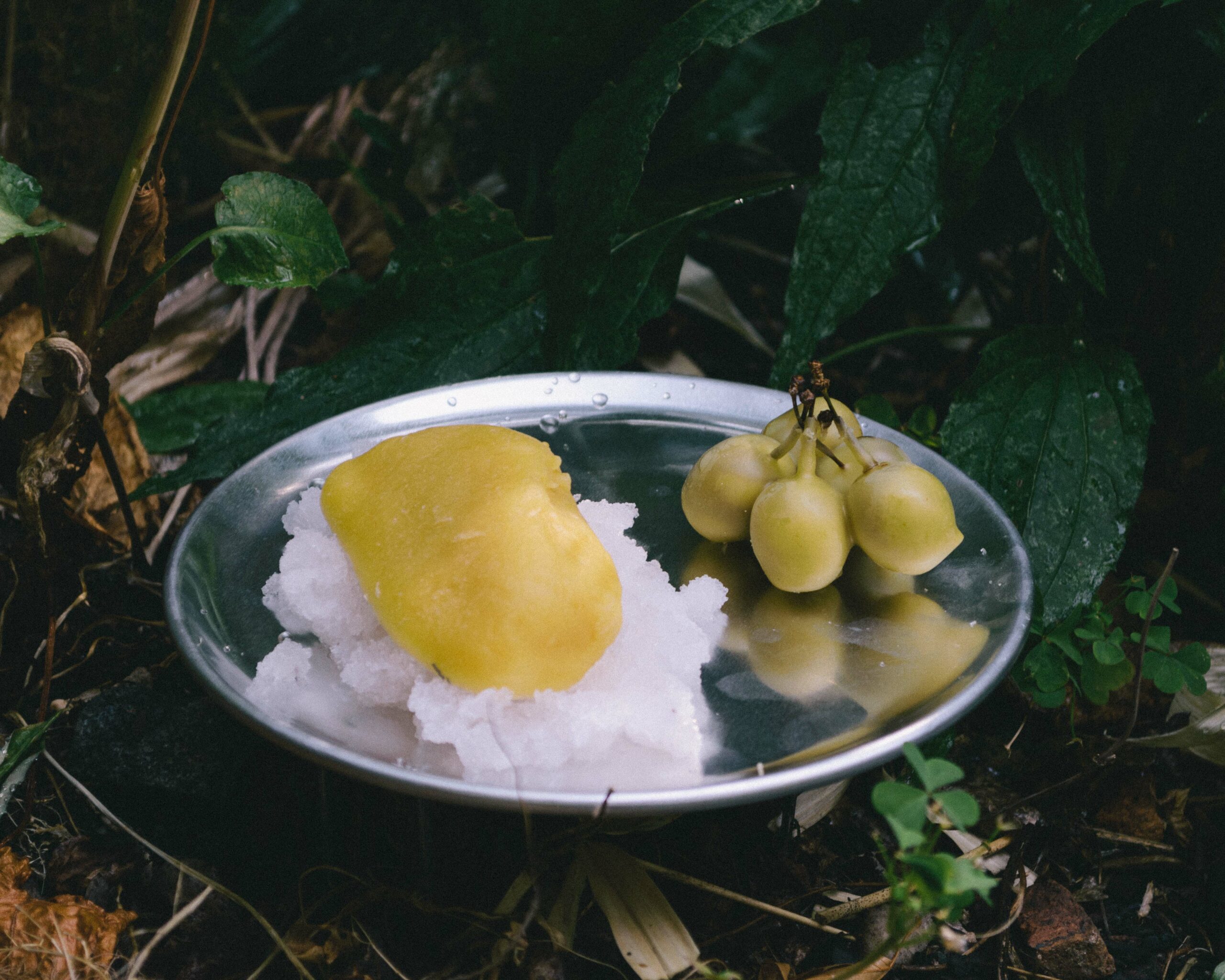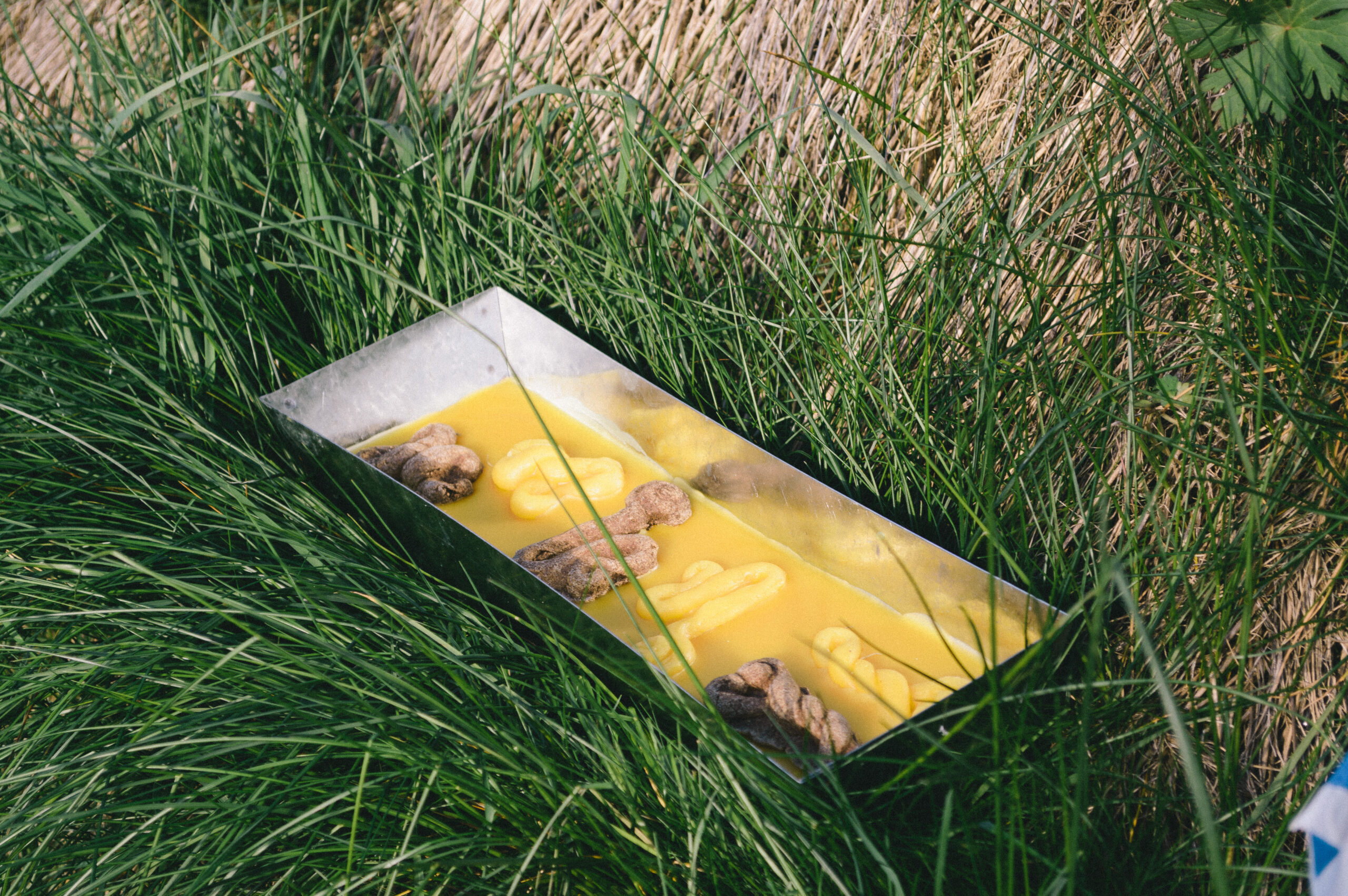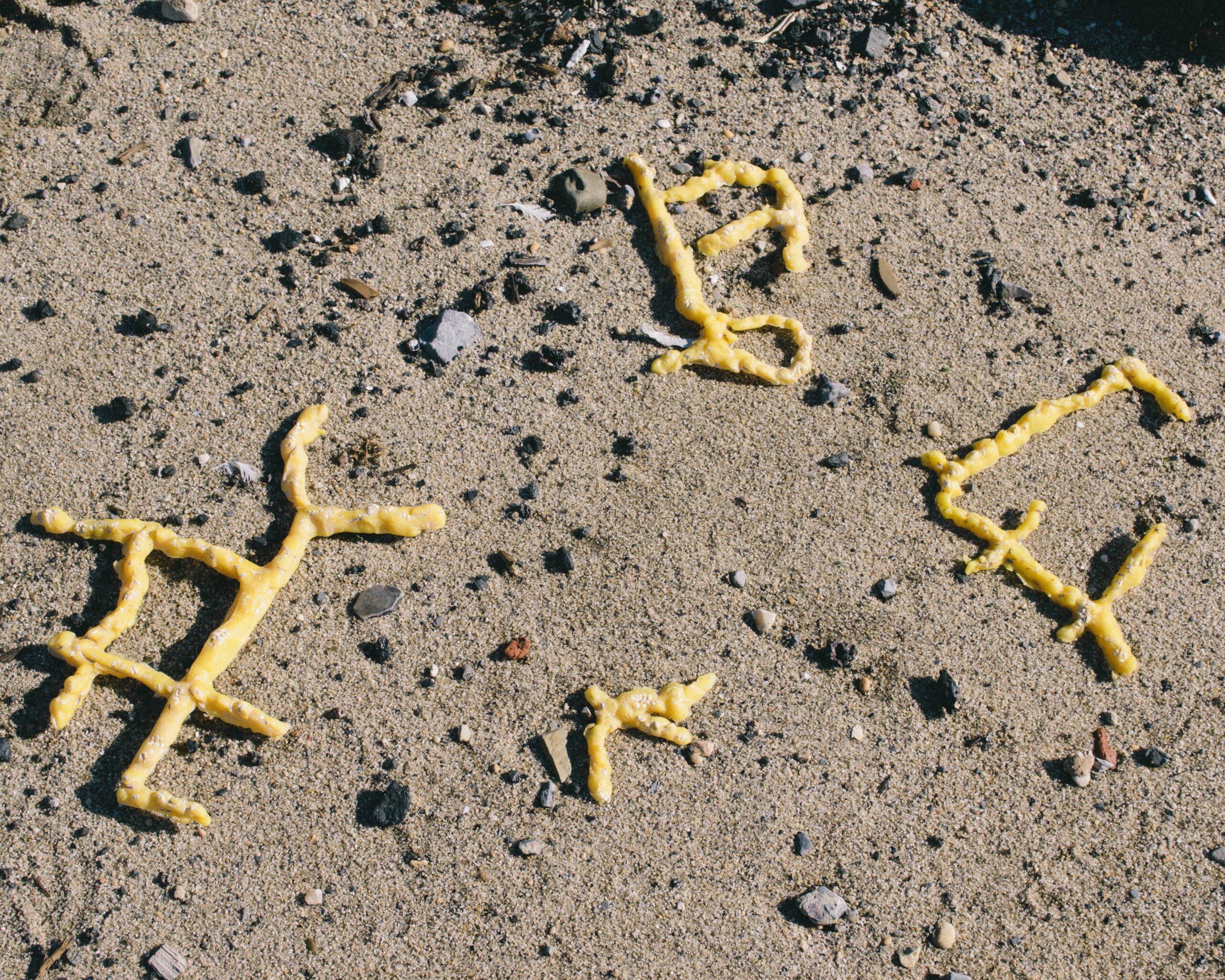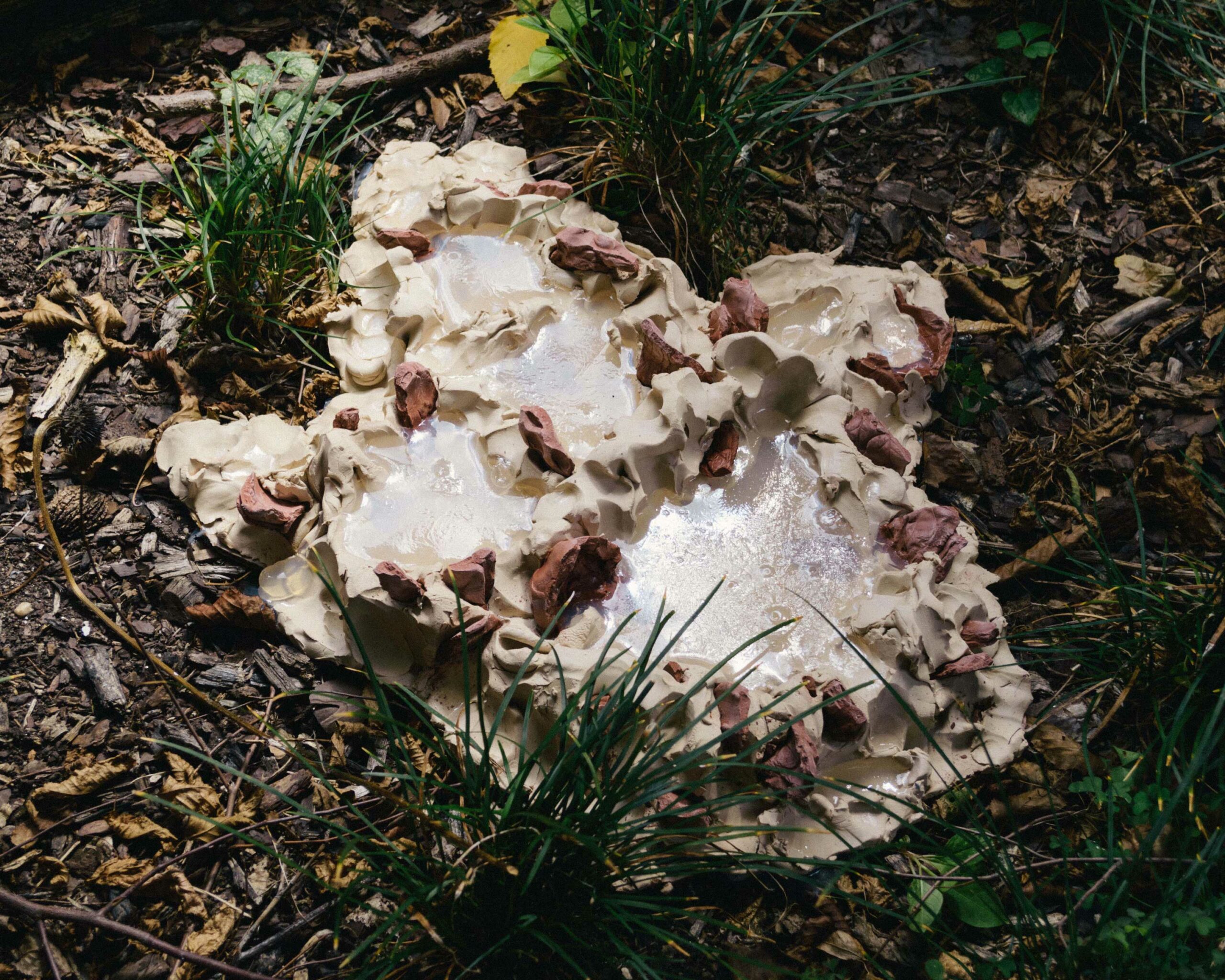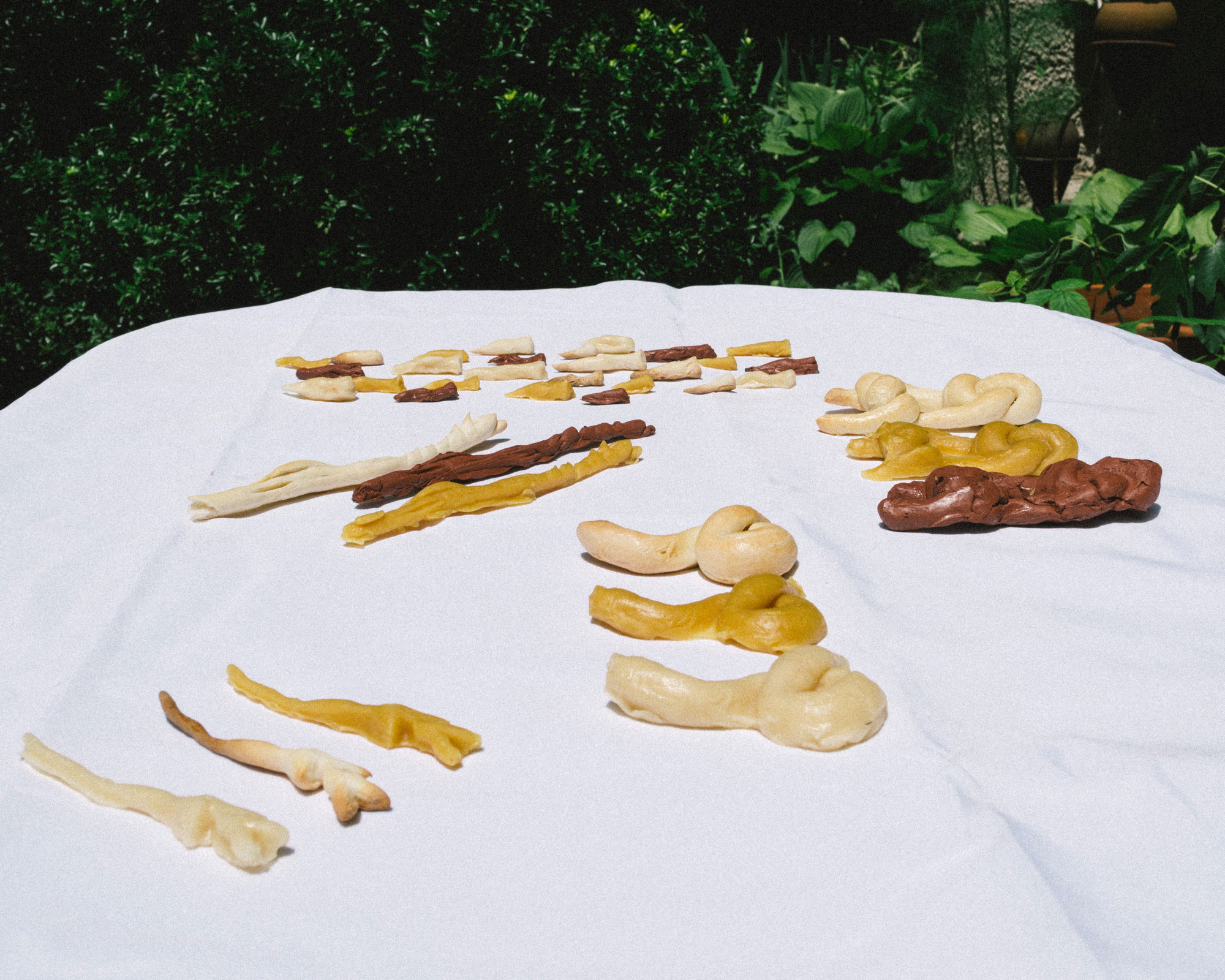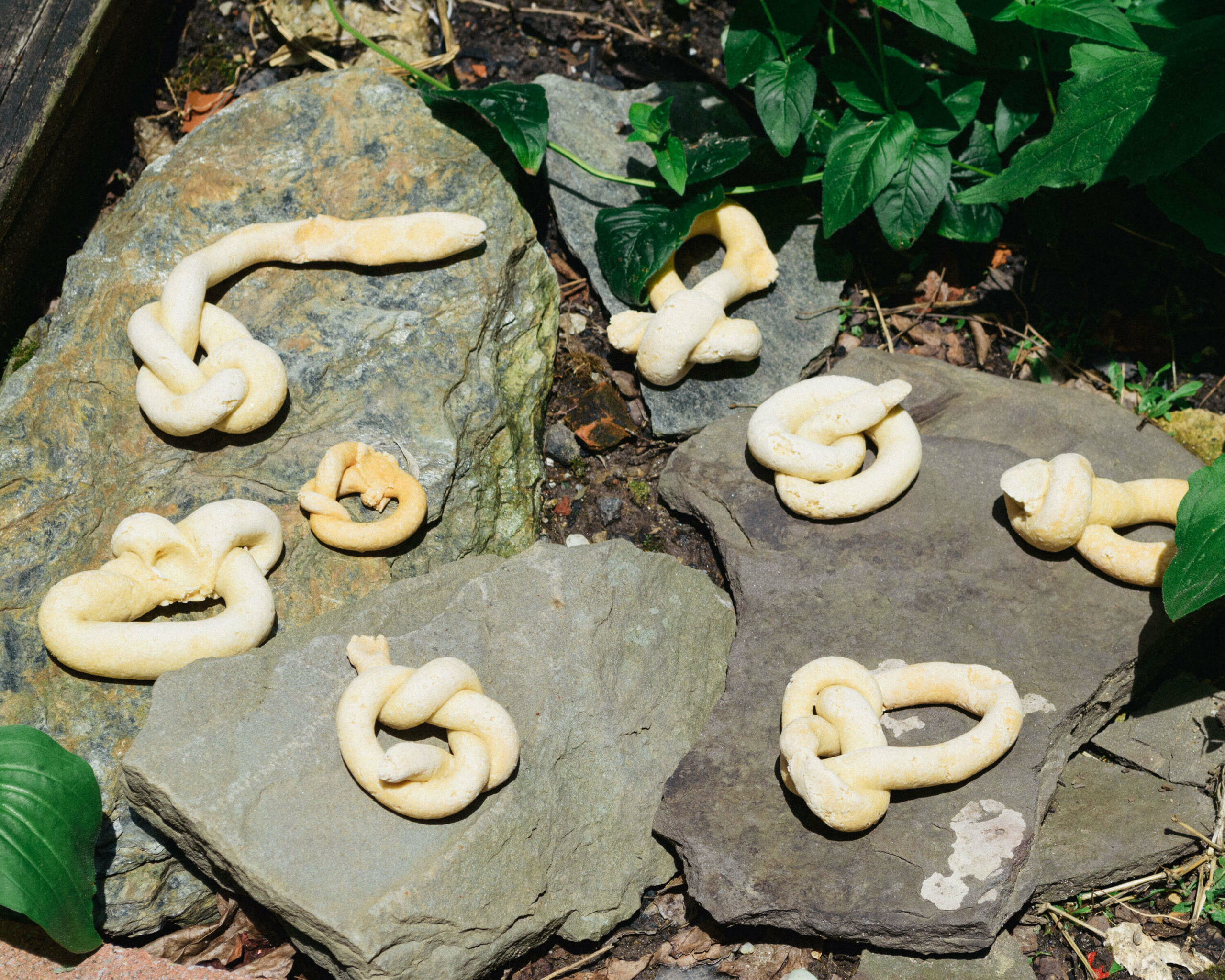Preservation, in the hands of humans, is a process used to control loss. In the face of an end, whether that is the end of an individual’s life phase or imminent climate catastrophe, processes of worlding occur as vigorously as they might during the beginning of something. Federico Campagna describes worlding as the metaphysical process of naming what already exists in order to create a commonly agreed upon world order:“Worlding is the creative act par excellence: the cosmogonic gesture separating the land of reality from the waters of the Real.”1 This process of worlding relies on the production and proliferation of myths and narratives to create the infrastructure for a new world. At the brink of an end, the worlding that happens must account for the brutal and often frightening prospect that in order to live or continue living, something has died. In Staying with the Trouble, Donna Haraway refers to this worlding as “world patterning”, reframing worlding activities as a kind of preparation of a ground for future growth (not dissimilar to the writing of a musical score, the preparing of a loom). The time between life and death and life again is not a dark one per se. Rather, it is a moment in which the existing world order is decomposed and liquified in order to allow for the recombination of a new one — a process not unlike those at play in traditional preservation practices and fermentation in particular. If cooking includes preservation (or rather, if we consider preservation to be a cooking technique) then preservation (i.e the stewardship of rot) is an act of worlding. Worlding attempts can thrive in decomposition or breakdown with the knowledge that the product won’t necessarily be less than its constituent or source elements. Instead, it assumes a future eater and prioritizes their future needs and experience over the present. All traditions of this stewardship do not, however, share the same kind of consideration for the future.
- 1. Federico Campagna, Prophetic Culture.
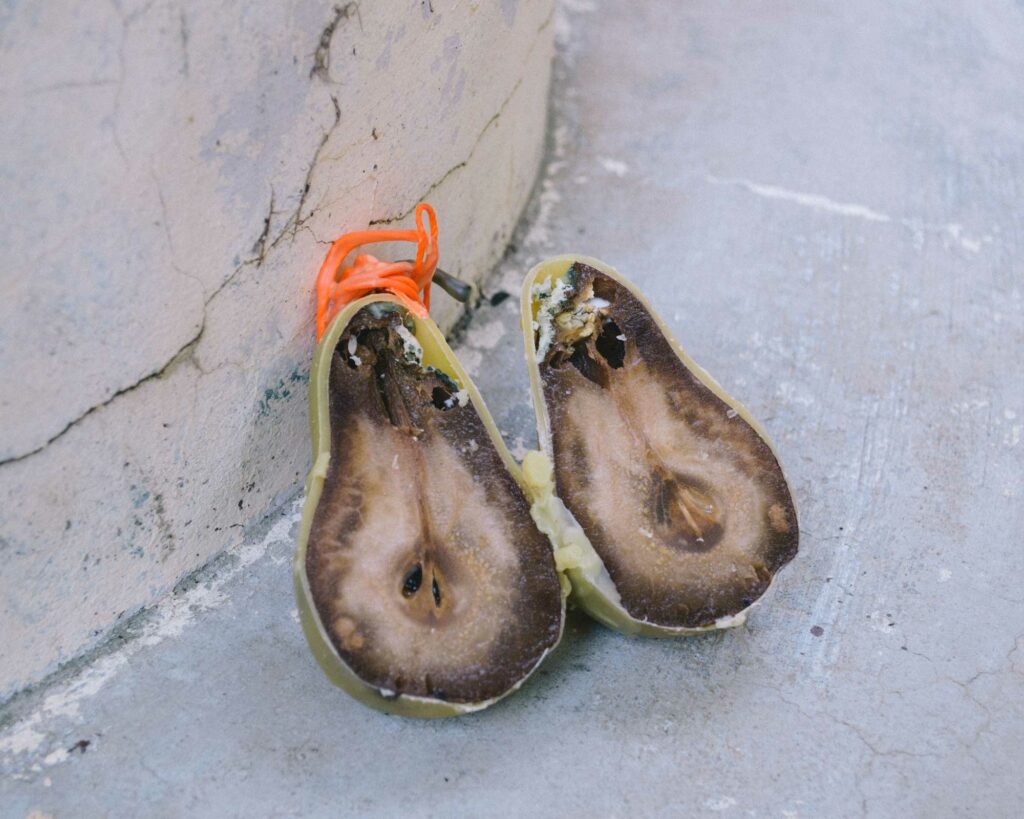
Through preservation, food is altered in such a way that unlocks nutritional value and makes ingredients digestible, tastier, and easier to store. Self-described fermentation revivalist Sandor Katz describes the process of fermentation “as the path of least resistance”.2 In short, this process harnesses the imperative of food to continue to transform. In the culinary triangles created by the French anthropologist Claude Lévi-Strauss, rot and cooking are identified as fundamentally transformative processes.3 In the primary version of the triangle, he creates a spectrum on which he places products of cooking as outcomes of cultural processes and products of rot as outcomes of the natural.
- 2. Sandor Katz, Wild Fermentation
- 3. Lévi-Strauss identified primarily as a structural anthropologist and was fundamentally interested in the use of myth across cultures to resolve and reconcile opposites, binaries, and contradictions. His work on the culinary triangle is among his best known demonstrations of his theoretical work and efficiently represents a larger complicated dichotomy of culture and nature.
Though the aesthetic qualities of rot and preservation may vary, we cannot consider preservation without engaging with disgust or abjection. Fundamentally, as Julia Kristeva claims, “It is thus not lack of cleanliness or health that causes abjection but what disturbs identity, system, order. What does not respect borders, positions, rules. The in-between, the ambiguous, the composite.”4 The latent disturbing quality of food is rooted in the knowledge that in one way or another, it is destined to become waste. While specific triggers of disgust vary across cultures (particularly in food), disgust springs from the disturbing identification of oneself in decay. An encounter with the smell, texture, and look of what is rotting or dead is the recognition of one’s own capacity to undergo a similar process. As Franco “Bifo” Berardi puts it,“Time is the dimension of decay and resistance, of dissolution and of recomposition. Time is the process of becoming other of every fragment in every other fragment, forever.”5 Preservation and fermentation embody this interfacing with the other in a process of reproduction of yourself or of humanity or of culture. Without the other there is no self and without decomposition there is no composition.
- 4. Julia Kristeva, Powers of Horror: An Essay on Abjection.
- 5. Franco “Bifo” Berardi, Futureability
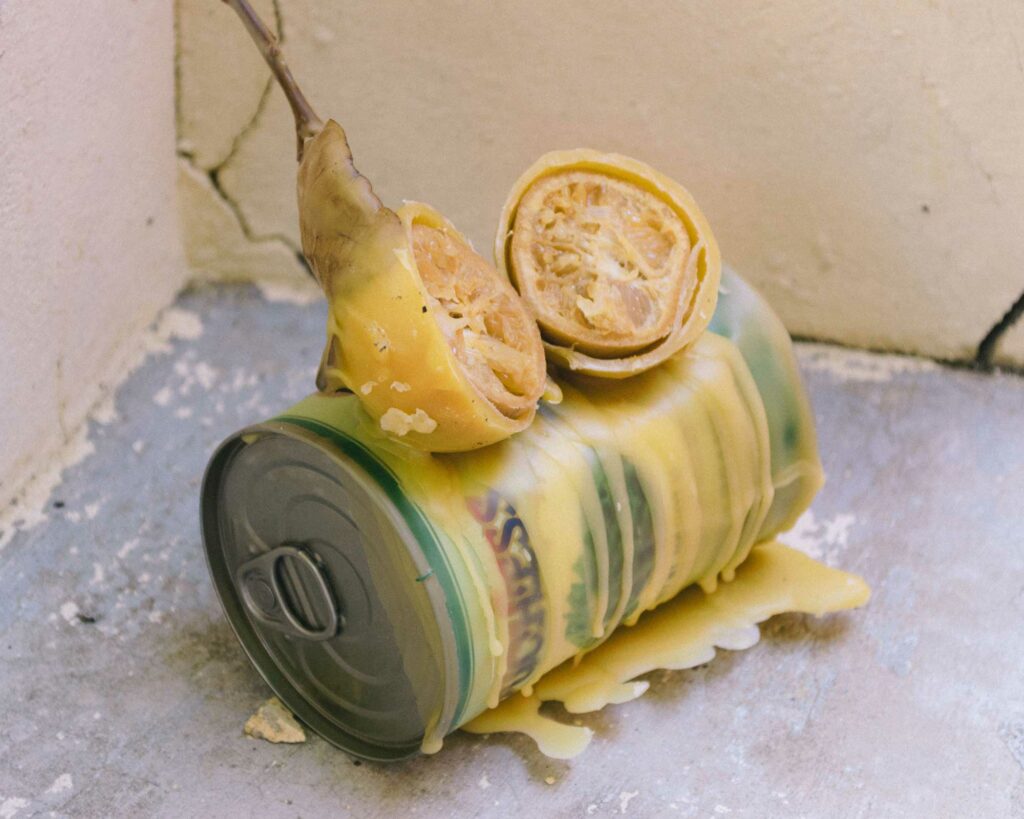
There are two primary categories of preserved food (or rather, there are inverted characteristics that put preserved food in one camp or the other). The first we’ll call “traditional” preserved foods. They are “traditional” in the sense that they are long standing processes and techniques that have co-evolved with human culture. These foods are those that incorporate and welcome rot, transformation, and decomposition with all of their assorted waste and outputs. Or, put more abstractly, products of sympoiesis or “making with”. Examples include cheese, wine, bread, miso, and a range of other often fermented products that involve human labor as well as cultivation processes necessitating other species in pursuit of a particular flavor, texture, nutrition, or lasting potential. Common to these foods is a particular liveliness that exists in relation to death, with liveliness, in essence, being a quality found in life that explicitly embodies the potential to die. As Byung-Chul Han understands it: “Liveliness is friendliness. That life is friendly that is able to die.”6
- 6. Byung-Chul Han, Capitalism and the Death Drive.
If we consider preservation to be a cooking technique, then preservation (i.e the stewardship of rot) is an act of worlding.
On the other side of this binary are foods that undergo processes to resist the natural transformation process of rot and decomposition — food that is canned, frozen, dehydrated, or otherwise rendered inanimate by human intervention. These examples can range from the innocuous, like a canned bean or tomato, to something much more processed like an MRE (meals ready-to-eat, a type of military ration), Soylent, or astronaut food. A common feature to these more prepared foods is their origins in industrial and military technology. The years following World War II in particular saw a mass pivot of military food processing and production from its original use in the battlefield toward use in the domestic kitchen. In the US, this looked like the rise in popularity of canned foods and microwave meals. For other countries, whose agricultural traditions and food production infrastructure had been disrupted by global conflict (often at the hands of the US), military food was a means of survival and was hybridized with traditional approaches and knowledge. From SPAM to pumpkin pie puree these processed ingredients are identifiable by their lack of liveliness and their promise of delayed expiration (i.e. death) beyond that of the purchaser, but through incorporation into new traditions of cooking they take on a new cultural liveliness.
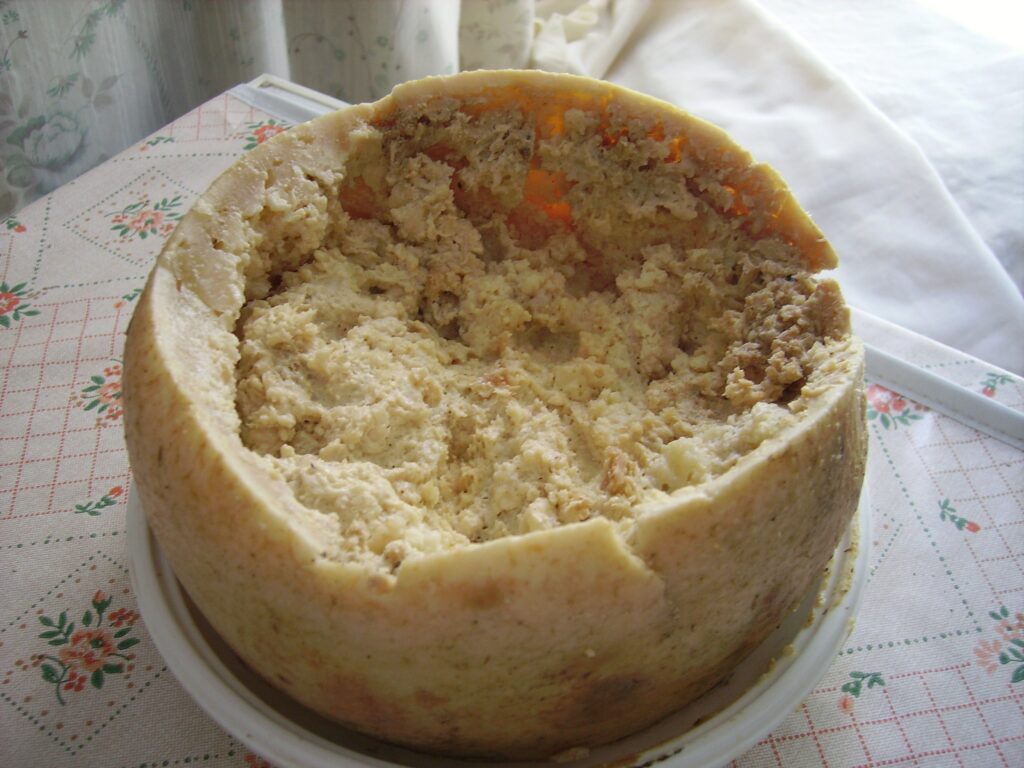
In traditional food preparation and cooking, death is accounted for and to be embraced, with death as a phase in transformation and not the end point. The drive towards death is to be harnessed in practicing life-sustaining reproductive labor. This transformation and the calculated risk involved in facilitating this change is foundational in various staple foods like cheese and wine. One example where the eater is unflinchingly confrotned with decomposing agents is the Sardinian cheese, casu marzu which contains maggots which carry out the signature transformation of the cheese. Much of preservation and fermentation is based on creating environments in which certain organisms prosper while others do not. In lacto-fermentation for example, removing oxygen and introducing salt encourages the introduction of Lactic Acid Bacteria which break down fruits and vegetables in a kind of predigestion while adding a signature acidity and preserving the ingredients for future use. It is easy to liken the complex dynamics of fermentation to our own complex existences as humans, so much so that it has now become an overused and fetishized metaphor There is the temptation to position fermentation as political or in some way inherently in opposition to an industrial or capitalist food system when in fact fermentation is used quite expertly in that arena to create food that is shelf stable, easily shippable, and highly profitable. While fermentation and preservation practices are inherently reproductive, how they are used can reproduce a life imbued with liveliness and nourishment or a life shaped by alienation.
A Prepper’s Paradise
Defined by their fear of death, Preppers or Survivalists (in the 1970s Retreaters was synonymous but has since been abandoned due to its cowardly slant) are fundamentally interested in preservation of the individual or preservation in service of perpetuating an individual life, outlook, and experience. It is a school of thought that is primarily concerned about experiencing the negative. negative here meaning both the loss or absence of life sustaining materials (i.e. food, water) or referring to the unpredictable emotions that accompany loss or change. This fear or attitude is endemic to capitalism: “Capitalism rests on a negation of death. Capital is accumulated as a defense against death, against absolute loss.”7 However, with preppers, this fear is openly embraced. Tess Pennington’s The Prepper’s Cookbook resembles any generic American cookbook in its cuisine agnostic recipe selection including “Easy French Toast”, “Reuben Casserole”, “Asian Ramen Salad”, “Taco Soup”, and “Personal Eggplant Marinara”, but in fact, articulates the theoretical underpinnings of Prepping quite lucidly:“Homesteading, self-reliance, and what many of us call “prepping” is really neo-pioneerism…In the midst of an unexpected event, it’s typical to experience fear, concern, and an overall feeling of being out of control. No one likes to feel this way. Those who have prepared can react quickly rather than sit in a state of shock. In any event, we don’t simply want to survive, we want to thrive, and those who prepare for emergencies—mentally, physically, and spiritually—are less likely to experience negative emotions and more likely to be able to adapt.”8 Pennington and many other preppers look to the American pioneer as an example of the frugal self-reliance they value, citing distant relatives who crossed the West in caravans to start fresh in an inhospitable, wild, and “empty” landscape.This narrative represents a common modern human impulse for a tidy origin story. Art historian Max Raphael unravels this impulse in his work on prehistoric cave paintings, describes history not so much as a line tracing back to a single origin but instead he describes a series of reinventions based in the material realities of each civilization’s context, “All the actions and events of human societies rest upon limited material prerequisites: nature on the one hand, and working tools and weapons by which man makes nature accessible, on the other. The lesser man’s physical domination of the world, the greater his need for imaginary spiritual domination of it.”9 This fixation with both physical and spiritual domination in the pursuit of survival and self-determination is central to the Prepper worldview.
- 7. Byung-Chul Han, Capitalism and the Death Drive
- 8. The Prepper’s Cookbook : 300 Recipes to Turn Your Emergency Food Into Nutritious, Delicious, Life-saving Meals, Tess Pennington
- 9. Max Raphael, Prehistoric Cave Paintings
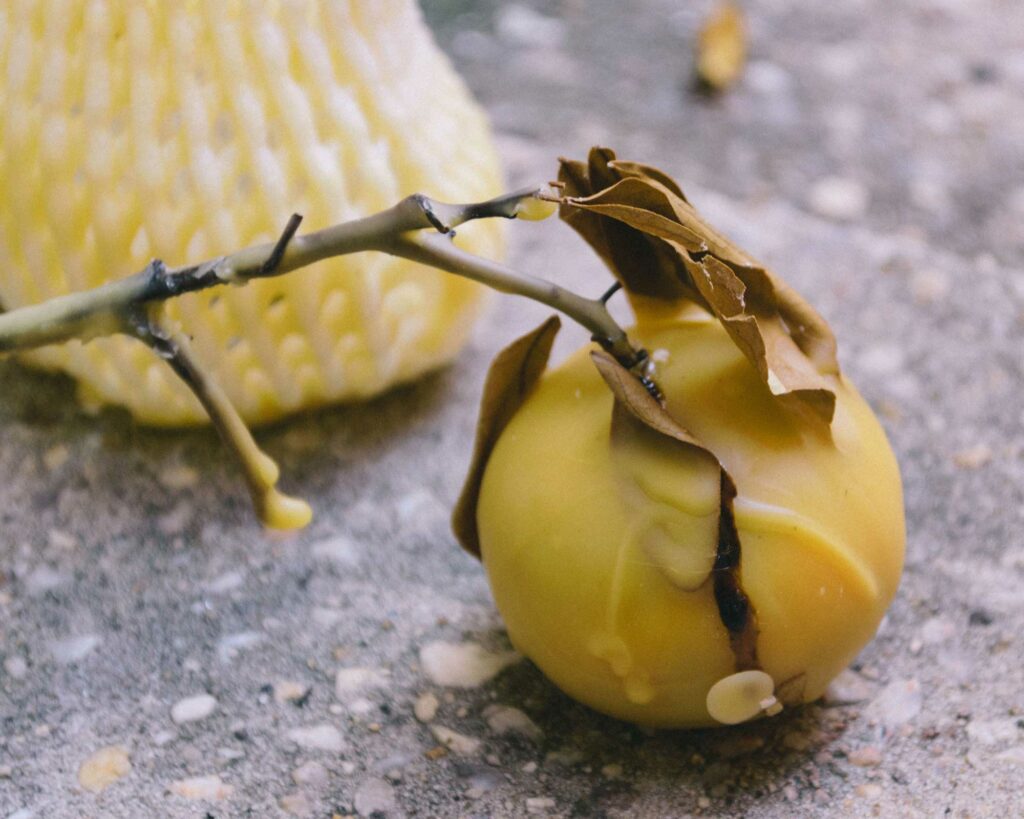
The Prepper’s focus is then, understandably, on the tangible and so-called wealth (or capital) that can only exist in a physical and tangible form. John Pugsley’s “The Alpha Strategy” is a cornerstone text in the Prepper and Survivalist understanding of wealth, “Let us begin by establishing a clear, concise definition. Tangible wealth consists of all the real products produced by man from the raw materials of nature and by the use of which man derives survival, comfort and pleasure. Tangible wealth includes such things as shoes, Ping-Pong balls, movies, Coca-Cola, automobiles, cheese soufflés, light bulbs, mousetraps, brassieres, newspapers, yachts and houses. There is also intangible wealth. It consists of knowledge and ideas, the things we must have in order to produce tangible wealth. Here, our concern is with tangible wealth—usable, consumable things—for it is in this area of economics that we are losing the most.”10 Survivalist and prepper impulses are fundamentally a product of neoliberal atomization, a reaction to the unsettling and alienating quality of the so-called Capitalocene or Anthropocene. This impulse spans the self-identified “conservative” to the “liberal”, from “preppers” to “back-to-the-land hippies” to anarcho-primitivists with all nominal “sides” essentially sharing the same goal of self-preservation and ideological purity in the process, prioritizing saving one’s own skin with little mind for other casualties of any disaster or apocalyptic scenario. This impulse is all but explicitly encouraged in order to rationalize and cope with communal (perceived or real) traumas. Interest in prepping historically spikes after major and commonly disturbing events, like the events of September 11th, the 2008 financial crisis, and most recently Covid-19. Anxieties about survival are stoked and the reaction for many (across the political spectrum) is a reaction to extreme alienation and loss of control. Though the distinction between different points on the spectrum from “prepper” to “hippie” is ultimately aesthetic, much like the difference between vitality or brain supplements endorsed by Goop versus those endorsed by Infowars. While My Patriot Supply, an online retailer of survivalist goods and literature including water filtration systems and dehydrated coffee creamer, goes by the motto “It’s Not Just Food. It’s Freedom.”, it also encourages shoppers with the threat of a world that “teeters on the edge of global breakdowns.” Contrast this to the marketing of Sun Potion, a purveyor of a mishmash of eastern ingredients, ayurvedic rituals, and vague adaptogens that placidly states “We want you to feel amazing”. The shrewd individuals and companies that capitalize on both aesthetic sides prey upon the shared underlying distrust of public institutions and projects that threaten to demand material sacrifices on an individual level for the common good. This distrust is ultimately the product of alienation from body, ecology, and labor and false aesthetic distinctions and targeted marketing only serve to perpetuate these fundamentally antisocial worldviews. As Walter Benjamin writes: “all efforts to render politics aesthetic culminate in one thing: war.”11 Turning survival and nourishment efforts inward is necessarily at the expense of collective action, and only serves to enable and enrich those in power who might otherwise be forced to act in service of the public and greater good.
- 10. John Pugsley, The Alpha Strategy: The Ultimate Plan of Financial Self-defense.
- 11. Walter Benjamin, The Work of Art in the Age of Mechanical Reproduction
If the worlding potential of food, and in particular preserved foods, is to be imaginatively utilized it then stands to reason that we consider what we have brought with us already from the “before” times. Accompanying our inherited traditions are information-dense archaeological sites that tend to contain a great deal of evidence of cuisine, trade, food production and religious practices in some combination. In the archaeological site lies a potential process for uncovering or reinventing our own worlding processes beginning with those that spring from the edible. It is then productive to consider building ourselves a sort of necropolis or a future archaeological site and asking what might be left and what it will say? There is possibility even in Bifo’s definition of semiocapitalism in which he describes a present and future where the majority of new information and relationship production is digital. But even within an exponentially accelerating, enclosing, and accumulating epoch, there is still the possibility to leave behind material evidence or residue and to endeavor to ensure the transfer of our learned processes in order to facilitate a dignified, lively, and productive end. In short, deciding how to die well and how to cook for the end of the world.
✺ Wax- Preserved Fruit Salad ✺
All natural food grade beeswax
Assorted fruits (grapes, plums, strawberries, apples, etc)
Melt beeswax in a double boiler or a glass or metal bowl sitting on top of a pot of simmering water. While wax is melting, wash the fruit and allow them to dry. Once the wax is completely liquid, dip the fruit in repeatedly in intervals of 2-5 seconds, allowing the wax to cool and solidify between each dip. The more layers, the more sealed the fruit is. The goal is between 20 and 30 layers for the best seal to create an anaerobic environment. Set fruit on a surface lined with baking paper for easy clean up. Then, leave the wax coated fruits in a cool dry place for 5–7 days. Cut open the wax shell and scoop out the insides or plate as-is.
